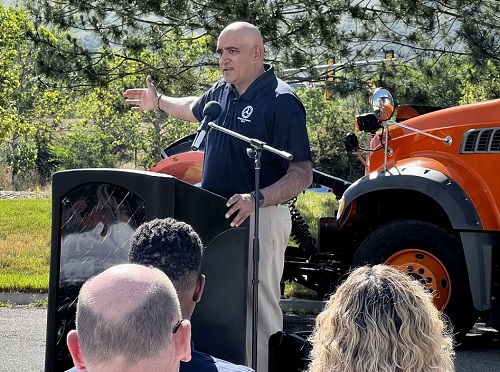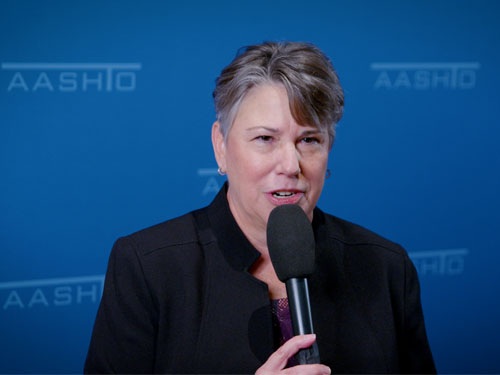The Federal Highway Administration recently issued a $20 million grant to the Utah Department of Transportation to help deploy vehicle-to-everything or V2X technologies in three states – Utah, Colorado and Wyoming – with each representing a broad variety of population densities, demographics, jurisdictions, topography, and transportation facilities.
[Above photo by Utah DOT]
The Utah DOT received that “V2X Accelerator” grant during a special media event in Salt Lake City.
FHWA noted that Utah DOT’s grant is part of a broader $60 million funding package that includes Arizona and Texas as well as Utah; a project that aims to serve as a national model to accelerate and spur new deployments of V2X technologies.

“Utah is a leader in promoting and deploying V2X technologies to explore the potential to save lives on our nation’s highways,” said FHWA Administrator Shailen Bhatt in a statement. “The funding provided today will help accelerate the technology so that we can deploy it on a national scale and provide new tools to combat fatalities on our nation’s highways.”
At the press event, Utah DOT noted that this V2X grant supports the “Connect West Project” that includes all of Utah; I-80 through the entire length of Wyoming; and major portions of Colorado, including the Denver Metro Area, I-70 from Denver to the Utah border; and I-25 through Colorado.
The V2X applications deployed as part of “Connected West Project” effort will focus on safety, mobility, and environment, and support the ability to demonstrate measurable impact and address critical needs including connected intersection, weather impact, curve speed warning, traveler information and vulnerable road user and other safety alert technologies.

“We see this as a potential inflection point in transportation, especially for safety,” said Carlos Braceras, executive director of the Utah DOT. “With this technology, we will be able to save more lives sooner. We look forward to working with our partners as we expand this connected network beyond the borders of our state.”
Jim Tymon, executive director of the American Association of State Highway and Transportation Officials, spoke at the event as part of a V2X deployment panel discussion that included the 5G Automotive Association, ITS America and the Institute for Transportation Engineers.
He stressed that strong USDOT leadership – along with consistent, sustained, and synergistic policies across all transportation modes – will be critical for the successful national deployment of V2X systems.
Tymon noted that clear articulation of the safety and efficiency benefits from V2X will be crucial to sustaining investments in that technology now and in the future. He also emphasized that state DOTs and other infrastructure operators will need ongoing technical training to support and grow a workforce capable of installing, operating, and maintaining V2X systems into the future.

[Editor’s note: Tymon made similar points during a USDOT V2X summit in November 2023 in Michigan; specifically pointing out that “interference issues” must be addressed by the Federal Communications Commission to allow for the full and reliable use of 5.9 GHz wireless spectrum by V2X systems.]
AASHTO also noted in a letter sent to USDOT on January 24 that the agency’s V2X plan – officially entitled “Saving Lives with Connectivity: A Plan to Accelerate V2X Deployment” – is “well-structured and lays out a clear vision of what is to be accomplished with concrete goals and targets over the short term, medium term, and long term. This is what the transportation industry needed and we look forward to refining the plan with USDOT.”
The organization appreciated that, consistent with AASHTO’s Connected and Automated Vehicle or CAV policy principles, the plan includes a vision of and strategy for V2X that can be embraced by the public and private sectors, infrastructure owners, automakers, and technology and standards developers; a strategy for V2X applications to be interoperable, across jurisdictions and makes and models of vehicles; establishes specific strategies to assure data security; and provides clear “day-one applications” that demonstrate the benefits of investing V2X technology.
 Top Stories
Top Stories
USDOT Makes $1.5B Worth of BUILD Grants Available
December 19, 2025 Top Stories
Top Stories

